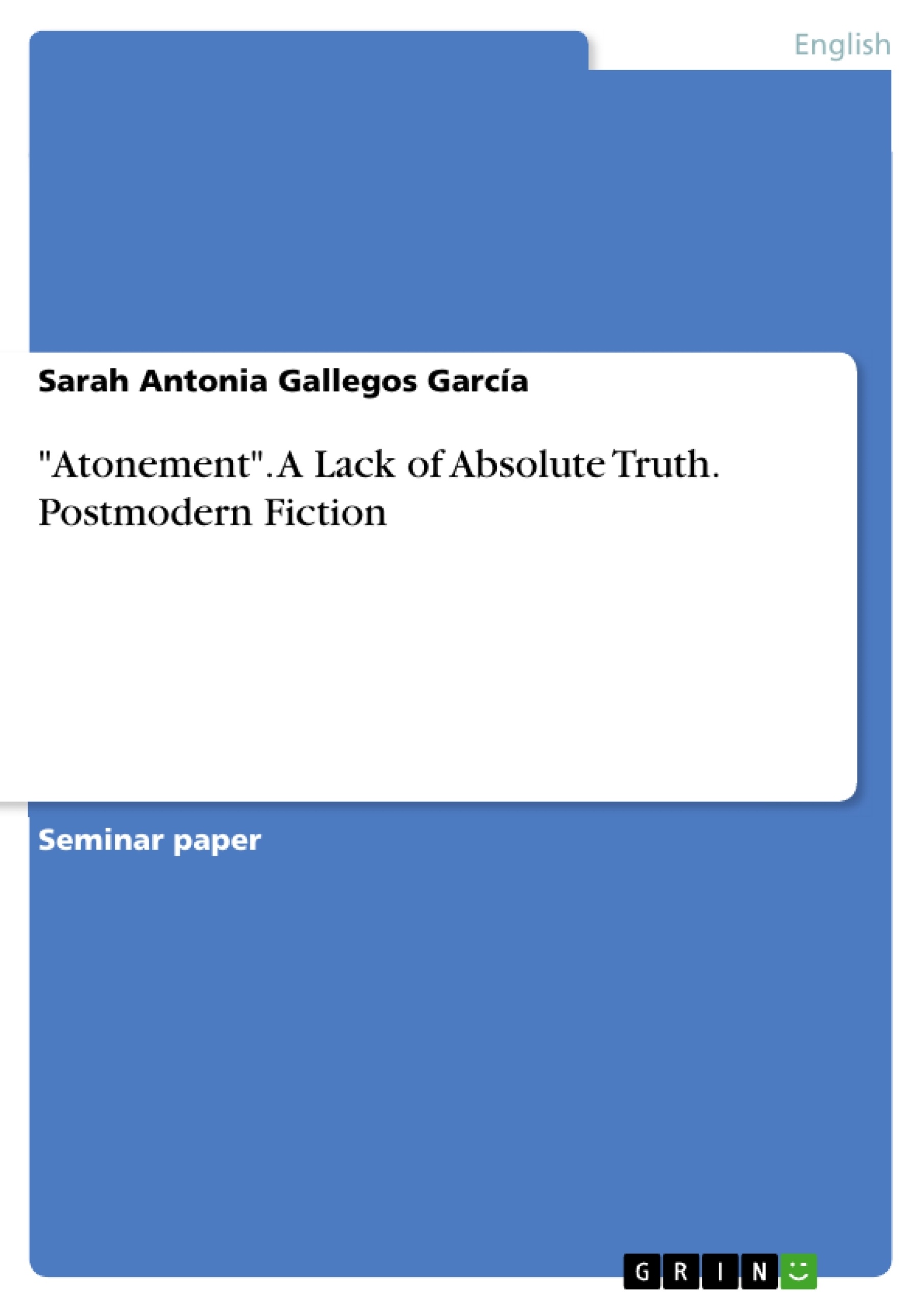“Since the brain seeks for patterns, to learn something well, the brain needs to recognize and categorize something and know what paradigm it fits into.” It is a biological fact that a human brain is always in need of structure, or in other words, humans are in search of the truth through which they may organize their perceptions and lives. But what happens, if this particular construct of the truth and reality is disturbed through representations that cause a human being to question his assumptions? In time, a chaos in mind will ensue which will have him repeatedly reconsidering his construct of the truth.
The same happens to Briony in and the reader of Atonement. “Bryony subsequently finds herself unable to deal with contradiction and imposes an interpretative ‘order’ on events […]. Just like Briony, the reader establishes a construct of the truth and a meaning for himself by assembling the representations of the book in an order, to arrive at a point where they make sense. The reader, who has been led to assume a version of truth in which Robbie and Cecilia are reunited, has to accept the falsity of this assumption when he/she arrives at the third part of Atonement, in which Briony reveals that Robbie and Cecilia were never able to meet again because both of them died before they could do so. Such an abrupt unraveling of the reader’s constructed version of the truth lead him to reconsider all previously assumed beliefs. He has to go back over the story to search for a construction of the truth that makes sense to him again. This seminal point in Atonement stands for the postmodern theory of truth: There is no absolute reality or truth. The only existing truth is a construct made up by the reader because he has to feed this need for order.
Table of Contents
- Introduction
- Devices Used in the Novel and the Film Version
- Metatextuality, Foreshadowing and Unreliable Narration in Atonement
- Metatextuality at the Beginning
- Foreshadowing I
- Unreliable Narration
- Foreshadowing II
- Metatextuality towards the End
- Conclusion
- Bibliography
Objectives and Key Themes
This paper examines the novel and film adaptation of Ian McEwan's "Atonement" through the lens of postmodern literary theory. It analyzes the ways in which both versions challenge the reader's/viewer's perception of truth and reality through various stylistic devices like metatextuality, foreshadowing, and unreliable narration.
- The postmodern concept of truth and its implications
- The role of unreliable narration in shaping perception
- The use of metatextuality to blur the lines between fiction and reality
- The effectiveness of foreshadowing in creating suspense and questioning assumptions
- The influence of postmodern thought on the representation of truth in both literature and film
Chapter Summaries
The introduction delves into the human need for order and structure, exploring how this desire for truth can be disrupted by narratives that challenge our assumptions. It introduces Briony Tallis, the protagonist of "Atonement," as a character whose need for order leads her to construct a version of reality that is ultimately flawed. This chapter sets the stage for exploring the postmodern concept of truth and its impact on both the characters and the reader's understanding of the story.
Chapter 2 examines the specific devices employed in the novel and film version of "Atonement" to question the truth. It introduces metatextuality, foreshadowing, and unreliable narration as central elements that contribute to the ambiguity and uncertainty surrounding the story's events. This chapter provides an overview of the key techniques that will be analyzed in greater detail throughout the paper.
The first section of Chapter 2 focuses on metatextuality at the beginning of the story. It highlights how Briony's passion for writing and her desire to create order are evident from the outset. This section explores how Briony's early interactions with her family and her writing process foreshadow the themes of truth and deception that will dominate the narrative.
This section then explores how foreshadowing is utilized within the text, offering glimpses into the direction the plot will take. It examines the use of unreliable narration, particularly through Briony's perspective, and how her distorted perception influences the events and the reader's understanding. By focusing on these early instances, the chapter lays the groundwork for a deeper analysis of how these stylistic devices contribute to the postmodern exploration of truth and deception within "Atonement."
Keywords
The primary focus of this paper lies on the exploration of postmodern thought and its manifestation in the novel and film version of "Atonement." Key concepts include postmodern truth, unreliable narration, metatextuality, foreshadowing, and the impact of these devices on shaping the reader's perception of the story. The analysis aims to demonstrate how these elements contribute to the central theme of questioning the truth and the elusive nature of reality in a postmodern context.
- Quote paper
- Sarah Antonia Gallegos García (Author), 2015, "Atonement". A Lack of Absolute Truth. Postmodern Fiction, Munich, GRIN Verlag, https://www.grin.com/document/499091



